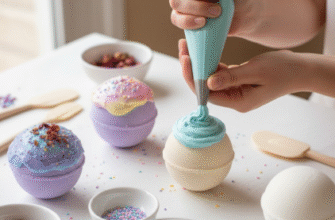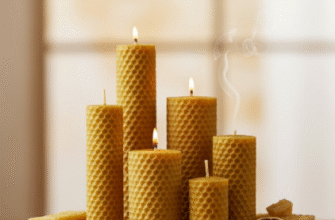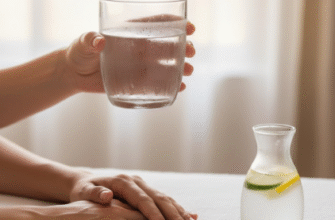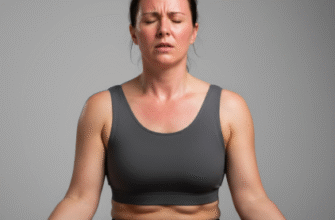Tired of store-bought lotions that feel greasy, disappear too quickly, or contain ingredients you can’t pronounce? There’s a certain magic in creating your own skincare, especially when the result is something as decadent as whipped body cream. Imagine dipping your fingers into a cloud of moisture, light as air yet deeply nourishing. Making it yourself is surprisingly achievable and allows you complete control over the ingredients, scent, and texture. Forget those expensive boutique tubs; let’s unlock the secret to crafting your own pot of skin-loving luxury.
This isn’t just about saving money, though that’s a nice bonus. It’s about the satisfaction of making something beautiful and effective with your own hands. It’s about knowing exactly what you’re putting on your skin – pure butters, beneficial oils, and maybe a hint of your favorite essential oil. The process itself can be quite meditative, a welcome break from the rush of daily life. And the final product? Pure, unadulterated bliss for your skin, leaving it feeling soft, supple, and pampered.
Gathering Your Treasures: Ingredients for Whipped Perfection
The beauty of DIY lies in its flexibility, but a good starting point uses a balanced combination of hard butters and liquid oils. This balance is key to achieving that signature light, whipped texture that absorbs beautifully without feeling heavy.
Core Components:
- Hard Butters (Approx. 60-70%): These form the backbone of your cream, providing richness and structure. Great choices include:
- Shea Butter: A powerhouse of moisture, rich in vitamins A and E. Unrefined shea butter retains more nutrients but has a nuttier scent. Refined shea is odorless and white.
- Mango Butter: Lighter than shea, absorbs well, and offers excellent moisturizing properties. It has a very mild scent.
- Cocoa Butter: Known for its delicious chocolatey aroma (use unrefined for scent, refined for less scent) and its ability to create a protective barrier on the skin. It’s quite hard, so use it in combination with softer butters.
- Liquid Carrier Oils (Approx. 30-40%): These add glide, additional nutrients, and help lighten the texture of the butters. Consider:
- Coconut Oil (Fractionated or Virgin): Virgin coconut oil solidifies in cooler temperatures, which can affect the final texture slightly but adds its characteristic scent. Fractionated coconut oil stays liquid and is odorless. Both are deeply moisturizing.
- Sweet Almond Oil: A popular all-around oil, rich in Vitamin E, easily absorbed, and suitable for most skin types.
- Jojoba Oil: Technically a liquid wax, its structure closely resembles human sebum, making it readily accepted by the skin. It’s very stable and has a long shelf life.
- Grapeseed Oil: A lighter oil, quick to absorb, and good for oilier skin types.
- Avocado Oil: Rich and nourishing, packed with vitamins, ideal for dry or mature skin.
- Optional Additions:
- Arrowroot Powder or Cornstarch (1-2 teaspoons per cup of oils/butters): Helps absorb excess oiliness for a more powdery, less greasy finish. Add this during the whipping stage.
- Vitamin E Oil (A few drops): Acts as an antioxidant, helping to extend the shelf life of your oils and providing skin benefits.
- Essential Oils (Approx. 10-20 drops per cup of oils/butters): For fragrance and potential therapeutic benefits. Choose skin-safe essential oils like lavender, chamomile, geranium, frankincense, or sweet orange. Always patch test first.
A Simple Starting Recipe (adjust percentages based on your preferences):
- 1/2 cup Shea Butter
- 1/4 cup Mango Butter
- 1/4 cup Coconut Oil (Virgin or Fractionated)
- Optional: 1 teaspoon Arrowroot Powder
- Optional: 5-10 drops Lavender Essential Oil
- Optional: A few drops Vitamin E Oil
The Alchemist’s Tools: Equipment You’ll Need
You don’t need a fancy laboratory. Most of the equipment is likely already in your kitchen.
- Double Boiler or Makeshift Version: A heatproof bowl (glass or stainless steel) set over a saucepan containing a few inches of simmering water. Ensure the bottom of the bowl doesn’t touch the water.
- Electric Hand Mixer or Stand Mixer: This is crucial for achieving that light, airy, whipped texture. Whipping by hand is possible but extremely tiring and won’t yield the same results.
- Measuring Cups and Spoons: Accuracy helps ensure consistent results.
- Spatula: For scraping down the sides of the bowl.
- Refrigerator or Freezer Access: Essential for chilling the mixture before whipping.
- Clean Jars or Containers with Lids: For storing your finished luxurious cream. Sterilize them first by washing thoroughly and rinsing with boiling water or running them through a dishwasher cycle.
The Transformation: Step-by-Step to Whipped Bliss
Patience is key during this process, especially during the cooling phase. Rushing it can prevent the cream from whipping up properly.
Step 1: Melting Gently
Combine your chosen hard butters and liquid oils (except essential oils and Vitamin E) in your heatproof bowl. Place the bowl over the saucepan with gently simmering water (your double boiler setup). Heat slowly, stirring occasionally, just until everything is melted and combined. Avoid overheating, as excessive heat can damage the beneficial properties of the oils and butters.
Handle with Care! The bowl and melted oils will be hot. Use oven mitts when handling the hot bowl. Never let water splash into your oil mixture, as this can introduce bacteria and cause spoilage. Ensure your equipment is perfectly dry.
Step 2: The Crucial Chill
Once everything is melted and smooth, carefully remove the bowl from the heat. Let it cool slightly at room temperature for about 10-15 minutes. Then, place the bowl in the refrigerator or freezer. This is the most critical step for achieving a whipped texture. You need the mixture to cool and solidify partially. It should become opaque and firm around the edges, but still relatively soft in the center – think the consistency of slightly softened butter. This can take anywhere from 30 minutes in the freezer to 1-2 hours in the refrigerator, depending on the volume and your appliance. Check it frequently.
Step 3: Let the Whipping Commence!
Once the mixture has reached the right consistency (solid but not rock hard), it’s time for the magic. Add your optional Vitamin E oil and essential oils now, if using. If you’re adding arrowroot powder or cornstarch for a less greasy feel, sprinkle it over the surface. Begin whipping the mixture with your electric mixer on a low speed, gradually increasing to medium-high. Scrape down the sides of the bowl periodically with your spatula to ensure everything is incorporated evenly.
Keep whipping! This process incorporates air into the mixture, transforming it from a dense balm into a light, fluffy cream. It will visibly lighten in color and increase in volume. Continue whipping for at least 5-10 minutes, or until it holds soft peaks, much like whipped cream. Don’t under-whip; this is what creates that luxurious, airy feel.
Texture Check Point: Properly whipped cream will look light, fluffy, and almost cloud-like. If it seems too dense, ensure it was chilled sufficiently before whipping. If it looks slightly grainy, it might have cooled unevenly; sometimes re-melting and re-chilling carefully can help, though this isn’t always successful.
Step 4: Potting Your Potion
Carefully spoon your beautiful, fluffy whipped body cream into your clean, dry jars or containers. Tap the jars gently on the counter to settle the cream and remove any large air pockets. Seal tightly with lids.
Personalizing Your Creation
Now that you’ve mastered the basic technique, feel free to experiment!
- Scent Combinations: Try blending essential oils. Lavender and chamomile are calming, citrus oils like grapefruit and sweet orange are uplifting, while peppermint (use sparingly!) can feel cooling.
- Color: While not necessary, you can add a tiny amount of skin-safe mica powder during the whipping stage for a subtle shimmer or color. Ensure it’s cosmetic grade.
- Butter/Oil Ratios: Prefer a richer cream? Slightly increase the butter percentage. Want something lighter? Increase the liquid oils slightly or incorporate lighter butters like mango. Keep notes on your experiments!
Storage and Shelf Life
Because this DIY cream contains no water or preservatives (unless you specifically add a cosmetic preservative, which is a more advanced technique), its shelf life depends on the freshness of your ingredients and keeping it free from contamination.
- Store your whipped body cream in a cool, dark place away from direct sunlight and heat sources.
- Always use clean, dry hands or a small spatula to scoop out the cream to avoid introducing bacteria or water.
- Generally, it should last for 3-6 months, potentially longer if you included Vitamin E oil and used stable oils like jojoba or fractionated coconut oil. Check for any changes in smell or texture as indicators it might be time to make a fresh batch.
- Temperature Sensitivity: Be aware that natural whipped body cream can change consistency with temperature. It may soften or melt in very warm environments and become firmer in cold temperatures. This doesn’t affect its quality, but if it melts, you might lose the whipped texture. You can often re-whip it after it solidifies again in the fridge if this happens.
Troubleshooting Common Issues
- Cream is too hard: The ratio of hard butters might be too high, or it was stored in a very cold place. Let it soften at room temperature. For the next batch, reduce the hard butter percentage slightly.
- Cream is too soft or melts easily: Too much liquid oil, or the ambient temperature is very high. Try storing it in the fridge during warm weather. For the next batch, increase the hard butter percentage.
- Cream feels greasy: You might be sensitive to one of the oils, or the ratio needs adjusting. Adding arrowroot powder during whipping helps absorb excess oiliness. Try using lighter oils like grapeseed or fractionated coconut oil next time.
- Cream didn’t whip up: Usually caused by not chilling the mixture enough before whipping. It needs to be partially solidified. Alternatively, the mixture might have gotten too warm during whipping (e.g., motor heat). Try chilling the bowl and beaters before starting.
Creating your own whipped body cream is a rewarding experience that yields a truly luxurious product. Enjoy the process, delight in the fluffy texture, and relish the feeling of deeply moisturized, happy skin, knowing you made it yourself with simple, natural ingredients. Happy whipping!








